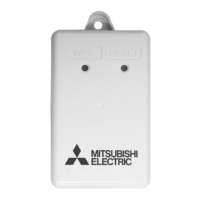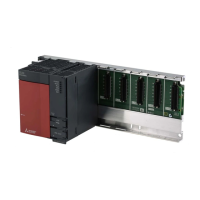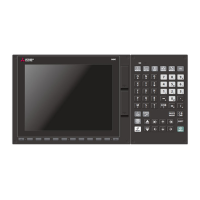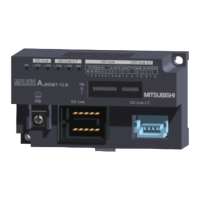CAUTION
5. Items related to programming
If there is no value after the G command, the operation will be the "G00" operation
when the program is run due to key chattering, etc., during editing.
" ; " "EOB" and " % " "EOR" are symbols used for explanation.
The actual codes are: For ISO: "CR, LF", or "LF" and "%".
Programs created on the Edit screen are stored in the NC memory in a "CR, LF"
format, but programs created with external devices such as the FLD or RS-232C may
be stored in an "LF" format.
The actual codes for EIA are: "EOB (End of Block)" and "EOR (End of Record)".
When creating the machining program, select the appropriate machining conditions so
as not to exceed the machine and NC performance, capacity and limits. The examples
do not consider the machining conditions.
Do not change the fixed cycle program without prior consent from the machine
manufacturer.
6. Items related to operation
Do not enter the movable range of the machine during automatic operation. Make
sure not to place hands, legs or face near the spindle during rotation.
Always carry out dry run operation before actual machining, and confirm the machining
program, tool offset amount and workpiece coordinate system offset amount.
7. Items related to faults and errors
If the BATTERY LOW warning is output, save the machining programs, tool data and
parameters to an input/output device, and then replace the battery. If the BATTERY
alarm occurs, the machining programs, tool data and parameters may be damaged.
After replacing the battery, reload each data item.
If the axis overruns or makes an abnormal noise, press the EMERGENCY STOP
button immediately, and stop the axis.
When setting the parameter not to check the overheat, the control unit and the
communication terminal may not be controlled because of overheat.
In such case, axis runaway may cause a machine breakage, an accident resulting in
injury or death, or device breakage.
To prevent the serious results, ordinarily set the parameters so that the overheat
check is valid.
8. Items related to maintenance
Do not apply voltages on the connector other than those indicated in Connection and
Maintenance manual. Doing so may lead to destruction or damage.
Incorrect connections may damage the devices, so connect the cables to the
specified connectors.
Do not connect or disconnect the connection cables between each unit while the
power is ON.
Do not connect or disconnect any PCB while the power is ON.
Do not replace the battery while the power is ON.
Do not short-circuit, charge, overheat, incinerate or disassemble the battery.
Dispose of the spent battery according to local laws.

